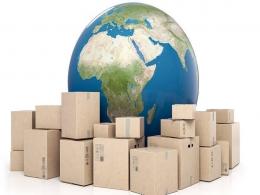The e-tailing market in India was valued at USD 5.6 billion in 2014 and is expected to grow at a CAGR of 53% to USD 70 billion by 2020. This growth would be on the back of rising internet penetration; increase in number of online shoppers and increasing share of online spend by customers. This phenomenal growth is expected to introduce complexities in e-tailing delivery logistics such as:
1. Explosion of pin codes – Pin code reach is expected to increase from ~5,000 currently to ~15,000 by 2020 as growth is expected from underpenetrated tier 2, tier 3 and tier 4 cities.
2. Cash on Delivery( CoD) complexities – Cash float is expected to reach USD 12.5 million per day and CoD is expected to remain a popular mode of payment
3. Manpower management – At a service provider level, delivery staff team is expected to increase 2X to 5X (currently players in China already at >30,000 delivery staff dedicated for ecommerce logistics)
For many e-tailers, managing these complexities could be difficult as it would be outside their core focus areas. Consequently, it is expected that 3rd party service providers would play a pivotal role in the entire e-tailing ecosystem.
When e-tailing operations began in India, there was a lack of focus from 3rd party service providers.
This was partly due to small scale of operations of e-tailers and unpredictability of future of ecommerce in India. Today, almost every leading logistics service provider has started an ecommerce
vertical. E-commerce focused logistics players such as Delhivery and Ecom Express have come up and received substantial financial support from private equity and venture capital funds. As the supply side bottlenecks improve, more and more players look to outsource delivery operations. Some of the issues that are expected to drive outsourcing are:
1. Developing economies of scale – E-tailers realize that reaching out to the next 10,000+ pincodes would be difficult as most of these would be at tier 3 and tier 4 locations. Catering to these locations in-house would require significant loss funding. Third party service providers are in a unique position to consolidate volumes, scale up and be more productive than in- house logistics arms. As a leading e-tailer puts it: ‘Managing manpower, infrastructure and line haul operations is a different challenge in itself, with our main focus being driving sales, we are clear that we will be outsourcing to third party service providers’.
2. Size of delivery operations – By 2020, some of the large players may need to work with a logistics team of 30,000+ if they continue to handle logistics in-house. Such a size would be greater than some of the largest logistics companies in the country today. Managing such a huge workforce would need significant management attention. Some of the leading e-tailers are focused on strengthening in cities where they have presence currently and add bikers in case of additional capacity. In terms of expanding geographies, they realize the growth would be slow and therefore volumes will be outsourced to third party service providers.
As e-tailers increase outsourcing in the future, they are expected to be in a better position to manage logistics complexities. Some of the benefits that can be yielded from the outsourcing model are:
1. Use of plug and play model - third party service providers generate plug and play models which can give scale and demand flexibility related benefits while generating volume discounts.
2. Issues with employee unions - Managing logistics inhouse would lead to employee strength swelling to a level where employee unions could become a challenge. Managing employee unions has its own set of challenges which can consume significant management bandwidth.
3. Focus on their core operations - Managing a large logistics arm would divert attention of the e-tailers from customer acquisition, cross-selling and upselling and customer retention which are their core focus areas.
To capture this opportunity, third party service providers would need to develop following capabilities –
1. Reach of the network – coverage of more than 10,000 pin codes, extensive branch network, last mile fleet, feet on street
2. Cash on delivery – CoD management capabilities across branches in India
3. Use of technology – use of IT tools, hand held devices for POD, card on delivery
4. Return management capabilities
5. Accurate volume weight measurement tools
6. Surface line haul capabilities
7. Ability to offer fulfilment center service
With an expected increase of about 10X in the number of shipments, there is room for existing and new players to enter and grow manifold. Overall, this signals a sizeable opportunity for the industry but to capture it, third party service providers need to start building these capabilities from today.
Manish Saigal is Managing Director & Sandeep Lal is Engagement Manager at Alvarez & Marsal.






